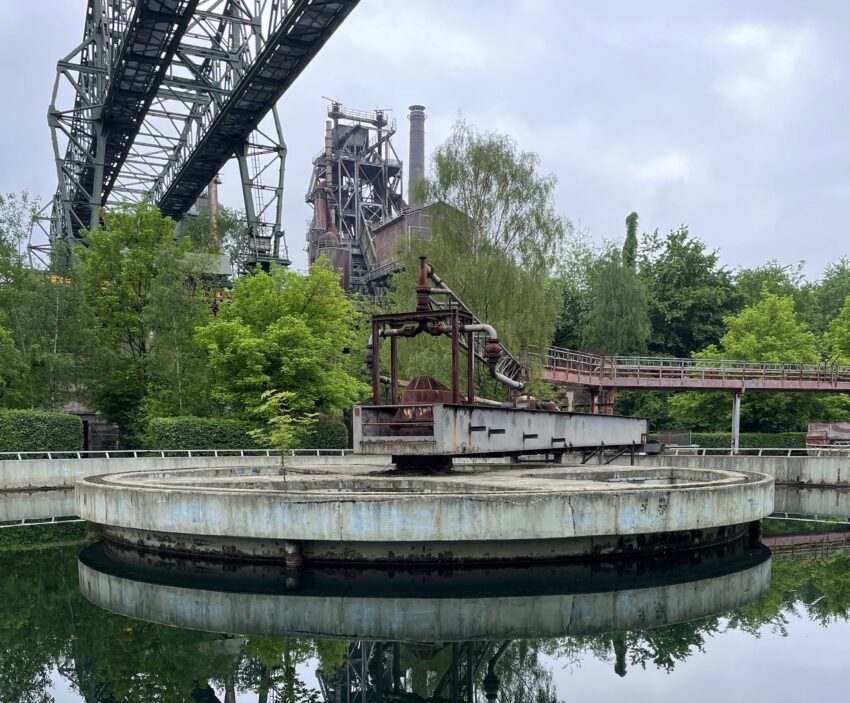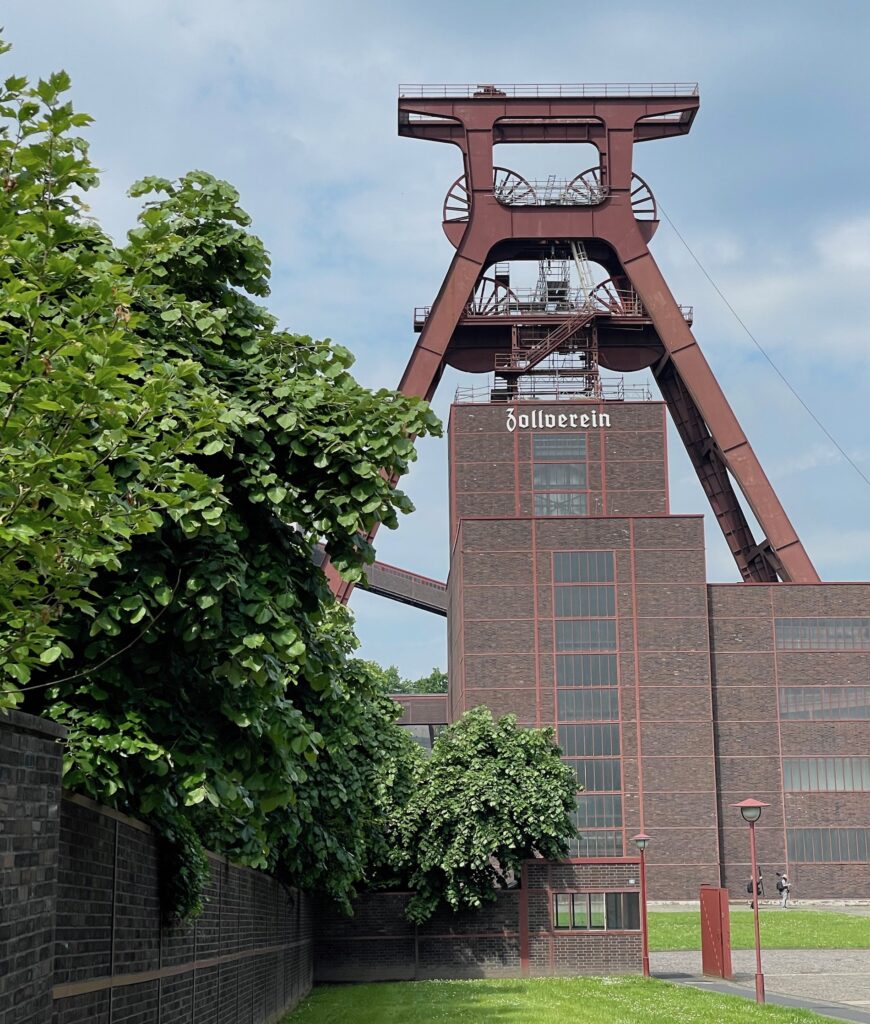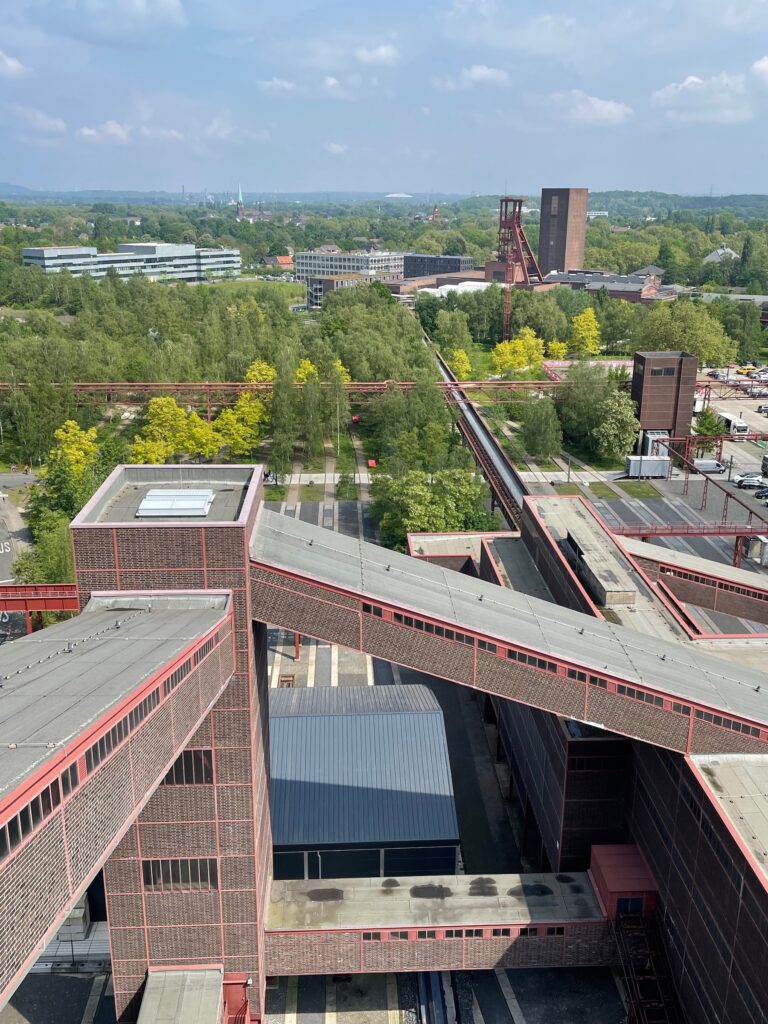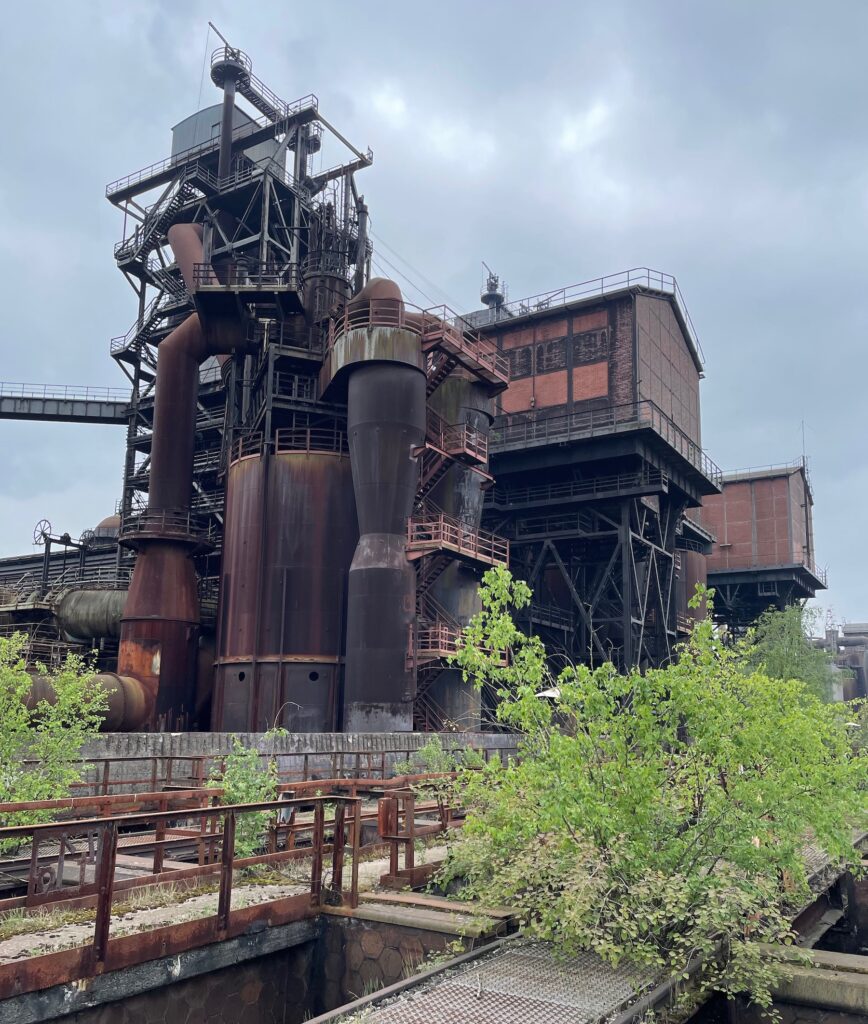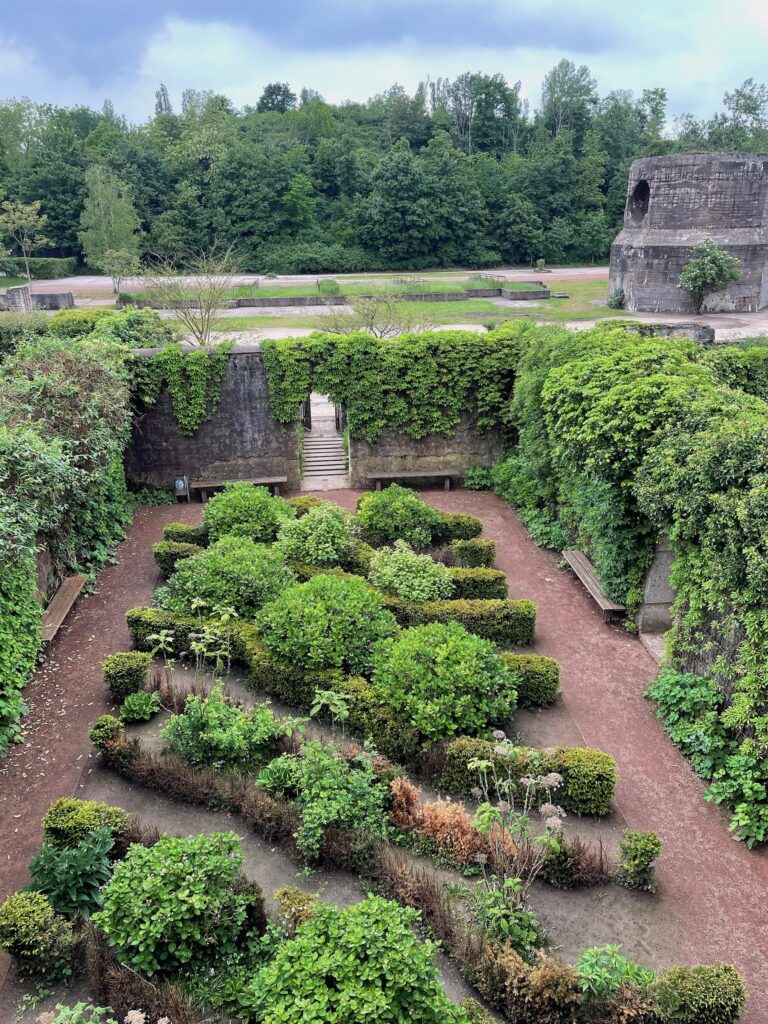The Ruhr was Germany’s economic powerhouse for years but with heavy industry in decline, the big question has been what to do with all those old coal mines and steel and iron works. While many have been cleared, several sites have been saved as a reminder of the region’s importance to the nation. Intriguingly, nature is being allowed back in too.
We visited two of the best industrial complexes during our short stay in Essen, a city that was the target of heavy bombing during the war and isn’t known for its range of tourist attractions.
Zollverein is now a UNESCO World Heritage Site and one of the most impressive of the remaining monuments to the region’s industrial heritage. A former complex of coal mines and coking plants that in some respects evoke the best of Bauhaus design, coal was mined here from the mid-19th century unil the 1980s amid an ever-changing architectural landscape. It’s the 20th century buildings that are the most compelling today. Shaft 12 and its associated structures were designed in the New Objectivity style, a smart and dynamic vision of red-brick, angles and industrial efficiency. There is real beauty in the functional design.
After its closure, the entire site was threatened with demolition but instead it was saved and has become the home of the Ruhr Museum. The entrance, in the old coal washing plant, is reached via a pair of dramatic orange escalators. The subject matter sounds rather dry but the story of the industrial rise and fall of the Ruhr is told well and there is much about the social history of the region, the people who worked there and how they lived their lives to add a vital human element to the story. In fact, photos of families at work and play are among the most interesting of the exhibits.
It’s not all brick and concrete. Nature is being allowed to work its magic across the site. Trees and shrubs have seeded into old rail lines and wildflowers have appeared by design and sponstaneously amid the rubble and shattered remains of the old, often rusting industrial equipment.
Nature is allowed more of a free hand at the Landschaftspark Duisburg-Nord, a short train journey from Essen Station. This public park was designed in the early 1990s in an effort to heal and understand the industrial past of the area, rather than to dispense with it. At its heart is the former Thyssen coal and steel production plant, a ruthless monster of steel, concrete, brick and ancient electronics that’s gradually being taken over by trees, shrubs, grasses and flowers. Some of the planting is deliberate, some is happening naturally despite the fact that the soils remain heavily polluted. It’s a compelling narrative and exploring it is a fascinating experience, in part because it’s not that often ordinary members of the public are allowed to clamber over decaying industrial sites. Climbing up the infrastructure of an old blast furnace, we were confronted with dials and vast pipes, massive vats and funnels. Half the fun was trying to work out the purpose of all those alien structures.
Waterways, natural and man-made, criss-cross the site, managing the run-off from the old industrial site, replacing the effluent that once filled the channels. Other areas of the compex have been converted too. Old concrete bunkers are now modest gardens, often deep in shade that’s perfect for hostas and ferns. A giant gas tank is now a deep pool for scuba divers, while concrete walls are perfect for rock climbers to practice on.
In truth we were at the park at the wrong time of year. The gardens and wildflower meadows lacked colour, still dressed in their autumn and winter garb. The weather, drab and grey, didn’t help. It had all looked so lush, bright and colourful when Gardener’s World visited for a TV report a few years earlier.
The rich Thyssen family once operated the plant at Landschaftspark Duisburg-Nord, as they did numerous other industrial sites across the Ruhr. The 19th century Villa Hügel just south of Essen was their home for some years and we took the tram into the countryside for a walk through the woods and to visit the house. Various family members have been caught up in scandal over the years and they were full-on Nazi sympathisers who did much to drive Hitler’s economy before and during the Second World War. As tends to happen, there’s a bit of whitewashing going on in the display that traces the family history and the story of their company. But it can’t be ignored…
It’s not always easy to follow the display as much of the information is in German but it made for an interesting half an hour. Later we went for a walk through the attractive grounds, down towards the Baldeneysee ready to catch the train back to Essen.

